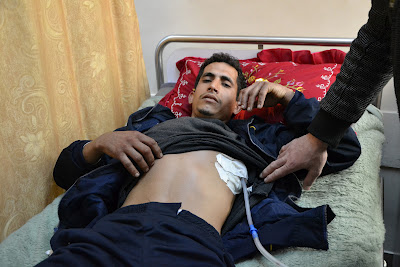-
Solidarity with Khader Adnan in the No Go Zone
by Nathan Stuckey 14 February 2012 | International Solidarity Movement, West Bank Two months ago, few of us knew the name Khader Adnan. Today, he is an inspiration to all of us. Two months ago he was kidnapped from his home by Israel. He was charged with no crime. He was abused by his captors […]
-
Air strike in south east Gaza City: “For the West, you have abandoned us to death”
by Rosa Schiano 15 February 2012 | il Blog di Oliva Saturday night Israeli F-16’s bombed civilian targets in several areas of the Gaza strip. One of these strikes killed a man and injured his son in the neighborhood of al-Zaytoon, south-east Gaza city. An F-16 dropped a bomb on a farm just before midnight. The watchman […]
-
Golani Brigade Report: Incidences in which Golani soldiers arbitrarily detained Palestinians and/or denied them access to roads or walkways.
14 February 2012 | International Solidarity Movement and Christian Peacemaker Teams Since the arrival of the Golani Brigade in Hebron on December 27th, international accompaniment organizations (Christian Peacemaker Teams, International Solidarity Movement, and others) have documented an increase in the number of serious human rights violations against the Palestinian people, particularly youth and children in the […]
Action Alert An Nabi Saleh Apartheid Wall Arrests BDS Bethlehem Bil'in Cast Lead Demonstration Denial of Entry Ethnic Cleansing Farmers Gaza Global Actions Hebron House Demolition International law Israeli Army Jerusalem Live Ammunition Nablus Ni'lin Prisoner Ramallah Rubber-coated steel bullets Settlement Settlers Settler violence Tear-Gas Canister Video

